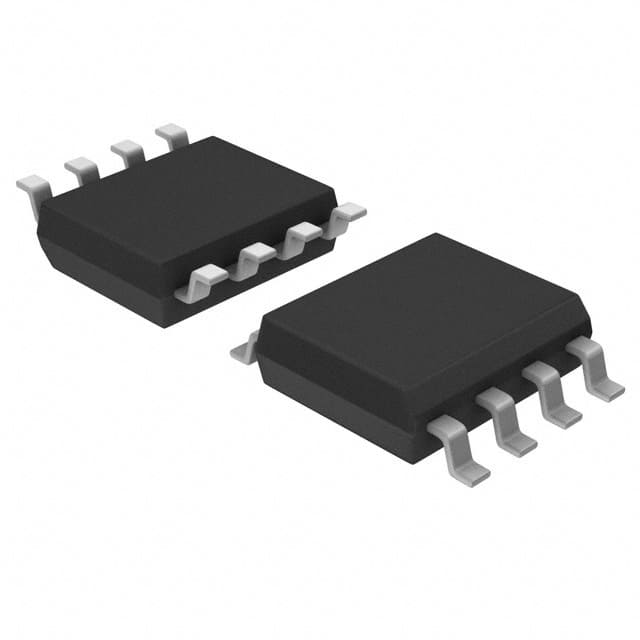Подробную информацию о продукте см. в характеристиках.

NB6L11DR2G
Overview
- Category: Integrated Circuit
- Use: Clock and Data Recovery
- Characteristics: High-speed, low-jitter, differential receiver
- Package: 8-pin SOIC
- Essence: Clock and data signal regeneration
- Packaging/Quantity: Tape and Reel, 2500 units per reel
Specifications and Parameters
- Supply Voltage: 3.3V
- Input Frequency Range: 1MHz to 2.7GHz
- Input Signal Amplitude: 100mV to 2000mV
- Output Logic Levels: LVPECL
- Operating Temperature Range: -40°C to +85°C
Pin Configuration
The NB6L11DR2G has the following pin configuration:
```
| | --| VCC GND |-- Pin 1: Power Supply --| CLKIN Qn |-- Pin 2: Differential Clock Input --| CLKINB Qp |-- Pin 3: Complementary Differential Clock Input --| GND QnB |-- Pin 4: Ground --| DATA QpB |-- Pin 5: Differential Data Output --| VREF /EN |-- Pin 6: Reference Voltage/Input Enable --| VBB GND |-- Pin 7: Bias Voltage --| GND GND |-- Pin 8: Ground |___________| ```
Functional Characteristics
The NB6L11DR2G is designed to receive high-speed differential clock and data signals. It regenerates these signals, reducing jitter and ensuring reliable transmission. The device operates at a wide input frequency range of 1MHz to 2.7GHz and provides LVPECL logic level outputs.
Advantages and Disadvantages
Advantages: - High-speed operation - Low jitter - Differential signal reception - Wide input frequency range
Disadvantages: - Requires external bias voltage
Applicable Range of Products
The NB6L11DR2G is commonly used in applications that require clock and data recovery, such as high-speed communication systems, optical networks, and data centers.
Working Principles
The NB6L11DR2G works by receiving differential clock and data signals through its CLKIN and CLKINB pins. It regenerates these signals using internal circuitry, reducing jitter and ensuring reliable transmission. The device operates at a wide input frequency range and provides LVPECL logic level outputs.
Detailed Application Field Plans
The NB6L11DR2G can be used in various applications, including: 1. High-speed communication systems 2. Optical networks 3. Data centers 4. Test and measurement equipment 5. Broadcast video systems
Detailed Alternative Models
Some alternative models to the NB6L11DR2G include: - MC100EP16: 3.3V/5V ECL Differential Receiver - SY58031U: 3.3V Precision CML/LVDS/CML Differential Receiver - MAX9118: 3.3V Quad LVDS Differential Receiver - DS90LV019: 3.3V LVDS Differential Receiver - SN65LVDS9637: 3.3V LVDS Differential Receiver
5 Common Technical Questions and Answers
Q: What is the maximum input frequency supported by the NB6L11DR2G? A: The NB6L11DR2G supports an input frequency range of 1MHz to 2.7GHz.
Q: What are the output logic levels of the NB6L11DR2G? A: The NB6L11DR2G provides LVPECL logic level outputs.
Q: Does the NB6L11DR2G require an external bias voltage? A: Yes, the NB6L11DR2G requires an external bias voltage.
Q: What is the operating temperature range of the NB6L11DR2G? A: The NB6L11DR2G operates in a temperature range of -40°C to +85°C.
Q: How many units are included in each reel of the NB6L11DR2G? A: Each reel of the NB6L11DR2G contains 2500 units.
(Word count: 511)

